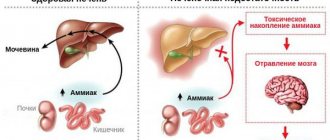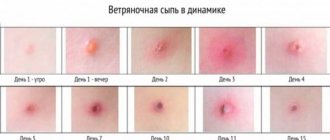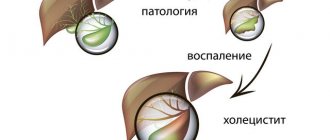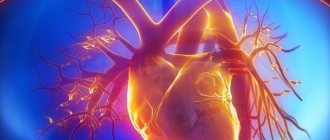Infectious disease specialist
Sinitsyn
Olga Valentinovna
33 years of experience
Highest qualification category of infectious disease doctor
Make an appointment
Diphtheria is a dangerous infectious disease, the mortality rate of which reaches 50%. For a long time, thanks to mass vaccination, this infection was considered completely defeated, but its outbreaks are still recorded in different countries, including developed ones. In recent years, due to the increase in incidence, diphtheria has been discussed again. According to WHO, in 2021, 16.5 thousand cases of diphtheria were recorded worldwide. In Russia, the epidemiological situation is still under control, because 97% of the population has been vaccinated. However, an increase in morbidity due to the refusal of some parents to vaccinate their children is also observed in our country.
The causative agent of diphtheria. Methods of transmission
The causative agent of diphtheria is the bacterium Corynebacterium diphtheria, which was first discovered and described by Edwin Klebs in 1883. The diphtheria bacillus is quite resistant to external factors. She can live for weeks: in saliva and water - two, in milk - three, in dust - up to five. Of particular danger to humans is its toxin, to which almost all organs of the human body are sensitive, but most of all the heart, kidneys, adrenal glands, and nervous system. The poison blocks protein synthesis in cells, which causes dangerous functional and structural changes that lead to death. The toxin acts both locally and systemically if it enters the blood and lymph. In severe cases, it can cause myocarditis or peripheral neuropathy, but most often the patient has trouble breathing due to the accumulation of dead tissue in the throat and tonsils.
The diphtheria bacillus is transmitted from an infected person in different ways:
- airborne;
- contact-household (this method of transmission is more common in hot countries where the cutaneous form of diphtheria is present; in temperate latitudes it is extremely rare);
- through food.
The more pronounced the course of the disease, the more bacteria the patient releases into the environment. But infection is also possible from a completely healthy person who is a carrier of the pathogen. However, the contagiousness of diphtheria is not as high as, for example, measles. Out of ten people in contact with the patient, only one or two can become infected.
Diphtheria has the following periods:
- incubation (2-10 days);
- the height of the illness;
- recovery (in the absence of treatment, death cannot be ruled out).
Causes
The source of the disease is an infected person: a patient or a carrier of a pathogenic strain. The pathogen is released from the body during the recovery period for quite a long time: from 15 days to 3 months. The route of transmission is aerosol, most often infection occurs by airborne droplets, less often by household contact or airborne dust. The stick can remain active on dishes and towels used by the patient. Able to multiply in food products: ready-made meals, meat, milk, cheese.
The bacterium is resistant to the external environment and remains viable for 2 months. It does not linger long on smooth surfaces; it can be found on soft toys, clothes, bedding, carpets, and wool products. The diphtheria bacillus tolerates cold, but dies at a temperature of +60 C within 10 minutes. Ultraviolet radiation (UV lamps and direct sunlight), disinfectants containing Lysol or chlorine are also harmful to it.
Classification of the disease
Diphtheria is classified according to several criteria.
In terms of prevalence, the disease can be localized, when one organ is affected, and widespread, accompanied by larger-scale lesions.
The following forms differ in localization and toxicity:
- diphtheria of the oropharynx (frequency – 92%):
- localized - catarrhal, island and film;
- widespread - plaque extends beyond the oropharynx;
- subtoxic, toxic (3rd degree of toxicity), hypertoxic, hemorrhagic;
- localized, manifested by inflammation of the larynx;
- common - inflammation extends beyond the larynx and invades the trachea;
- descending - in addition to the larynx and trachea, damage to the bronchi is noted;
Diphtheria symptoms
In temperate latitudes, oropharyngeal diphtheria is most common. The symptoms initially resemble a sore throat. The disease begins with fever and weakness, in addition the following symptoms are observed:
- swelling of the mucous membrane of the oropharynx and neck;
- gray-white plaque on the tonsils;
- enlargement of the submandibular and cervical lymph nodes.
In a localized form, the plaque does not extend beyond the tonsils, the intoxication is not intense, and the pain when swallowing is not very acute. If the patient has a strong immune system, recovery is possible even without the administration of anti-diphtheria serum, but the disease is fraught with serious complications.
The most common form of diphtheria is the membranous form, in which the plaque on the tonsils looks like a dense film with clear edges. When you try to remove it with a spatula, the tonsils begin to bleed. The throat swells and hurts very much. The wider the spread of plaque, the more intoxication of the body is manifested.
Toxic diphtheria is dangerous. Without timely administration of serum, it turns into hypertoxic or hemorrhagic forms. In the toxic form, the disease develops very quickly, the temperature rises sharply to 40 °C. Symptoms of general intoxication are clearly expressed: severe weakness, headache, pain in the throat and neck, and sometimes in the stomach. The dirty-gray plaque thickens after 2-3 days and completely covers all the tonsils, arches, soft and hard palate. Breathing becomes difficult even through the nose, and the neck swells greatly. You can feel a sweetish-sweet odor from your mouth.
With the hypertoxic form of diphtheria, intoxication increases even more. The patient periodically loses consciousness and experiences convulsions.
In the hemorrhagic form, there are extensive hemorrhages, bleeding from the nose, gums, and digestive organs. Death occurs within 2-3 days due to asphyxia (films block breathing), heart failure, damage to the kidneys and nervous system, or paralysis of the respiratory muscles.
Are you experiencing symptoms of diphtheria?
Only a doctor can accurately diagnose the disease. Don't delay your consultation - call
Treatment at the Mama Papa Ya clinic
The network of family clinics “Mama Papa Ya” offers vaccination services for children and adults, identification of pathogen carriers, and consultations with doctors of various specialties. Our advantages:
- an extensive network of branches in Moscow and other cities;
- affordable prices for medical services;
- full consultation on vaccination issues, assistance with choosing a drug, including allergic reactions;
- restorative treatment of corynebacterium carriers;
- examinations and consultations with specialists (cardiologist, neurologist) in the event of the development of complications of the disease.
If you have any questions about this topic, please make an appointment with the clinic by phone or on our website.
Reviews
Good clinic, good doctor!
Raisa Vasilievna can clearly and clearly explain what the problem is. If something is wrong, she speaks about everything directly, not in a veiled way, as other doctors sometimes do. I don’t regret that I ended up with her. Anna
I would like to express my gratitude to the staff of the clinic: Mom, Dad, and me. The clinic has a very friendly atmosphere, a very friendly and cheerful team and highly qualified specialists. Thank you very much! I wish your clinic prosperity.
Anonymous user
Today I had a mole removed on my face from dermatologist I.A. Kodareva. The doctor is very neat! Correct! Thanks a lot! Administrator Yulia Borshchevskaya is friendly and accurately fulfills her duties.
Belova E.M.
Today I was treated at the clinic, I was satisfied with the staff, as well as the gynecologist. Everyone treats patients with respect and attention. Many thanks to them and continued prosperity.
Anonymous user
The Mama Papa Ya clinic in Lyubertsy is very good. The team is friendly and responsive. I recommend this clinic to all my friends. Thanks to all doctors and administrators. I wish the clinic prosperity and many adequate clients.
Iratyev V.V.
We visited the “Mama Papa Ya” Clinic with our child. A consultation with a pediatric cardiologist was needed. I liked the clinic. Good service, doctors. There was no queue, everything was the same price.
Evgeniya
I liked the first visit. They examined me carefully, prescribed additional examinations, and gave me good recommendations. I will continue treatment further; I liked the conditions at the clinic.
Christina
The doctor carefully examined my husband, prescribed an ECG and made a preliminary diagnosis. She gave recommendations on our situation and ordered additional examination. No comments so far. Financial agreements have been met.
Marina Petrovna
I really liked the clinic. Helpful staff. I had an appointment with gynecologist E.A. Mikhailova. I was satisfied, there are more such doctors. Thank you!!!
Olga
Diagnosis of diphtheria
If a characteristic fibrous plaque appears on the tonsils and in the nasal cavity, laboratory diagnostics are used to identify the diphtheria bacillus. The following tests are performed:
- a general blood test indicating the presence of an acute inflammatory process;
- bacterioscopy (a smear for diphtheria taken from the tonsils or from the nasal cavity is examined under a microscope);
- bacteriological examination (the taken biomaterial is sown in a special nutrient medium, germinated and studied under a microscope);
- titer of antitoxic antibodies;
- serological test (specific antibodies in blood serum are determined).
Laboratory tests are performed to rule out other diagnoses that have diphtheria-like symptoms and to monitor the effectiveness of antibiotic treatment.
The following have similar symptoms:
- tonsillitis of various etiologies;
- retropharyngeal abscesses;
- Infectious mononucleosis;
- acute laryngotracheitis;
- epiglottitis;
- sycosis of the nose;
- abscesses of the nasal septum, synechia, ozena;
- candidiasis of the oral cavity and esophagus.
Advantages of JSC "SZDCM"
You can get tested for diphtheria and other bacterial infections in one of the departments of the Northwestern Center for Evidence-Based Medicine. All conditions are created for you here:
- Friendly staff and no queues.
- Qualified laboratory technicians and precise, modern equipment.
- Quick availability of results and several ways to obtain them.
Laboratory terminals and medical centers are conveniently located for travel by public transport and private cars. You can take the study in St. Petersburg and other cities of the Leningrad Region, Veliky Novgorod and the Novgorod region, Kaliningrad and Pskov.
Treatment of the disease
Corynebacterium most often affects children aged 3-7 years, but you can get diphtheria at any age. Recently, cases among adults have become more frequent. Those who have reduced immunity and chronic diseases are especially at risk. Sick people are subject to hospitalization in an infectious diseases hospital, their contacts with the outside world are kept to a minimum in order to prevent further spread of the infection.
A patient with a confirmed diagnosis is injected intramuscularly with anti-diphtheria serum. It prevents the toxin from getting inside the cells. The dosage depends on the severity of the disease:
- for mild forms – 20-40 thousand IU;
- with average – 50-80 thousand IU;
- for severe cases - 90-150 thousand IU, of which 2/3 doses are administered at a time.
Next, antibiotics are prescribed, which are taken for 10-14 days. Local therapy is also indicated - rinsing the throat and nose with special solutions.
For moderate and severe forms of diphtheria, detoxification therapy is carried out with glucose-saline solutions, and glucocorticosteroids are also prescribed. Meals during treatment should be high in calories and fortified. Dishes that have undergone sufficient heat treatment are allowed.
Patients who are carriers of the infection are prescribed a course of antibiotics and restorative therapy.
The last two days of the incubation period and the entire height of the disease, the person poses a threat to others. Even if appropriate treatment is given, it will remain a source of infection for at least four days. And if the disease was mild and the person did not receive anti-diphtheria serum, he is dangerous to others even 2-3 weeks after the symptoms disappear.
Prognosis and prevention
The prognosis is most favorable for localized, mild and moderate forms. But, subject to timely treatment using APDS. The most dangerous and less favorable are toxic forms of the disease, late initiation of treatment and the development of complications.
Prevention of diphtheria consists of timely vaccination. The first vaccination is given to children at the age of 3 months, subsequent ones at 9 - 12 months, then 7 years, 12 years and adolescents at 16 years of age. Adults can also get vaccinated. Immunity after vaccination and illness lasts for 10 years. Mass vaccination of the population has reduced the mortality rate from diphtheria to <5%. Previously it reached 60%.
Complications of diphtheria
Without timely administration of anti-diphtheria serum, the disease can develop into severe forms, but even mild diphtheria has side effects. Most often, the cardiovascular system is negatively affected, which is expressed in the form of myocarditis and heart rhythm disturbances.
The effect of diphtheria toxin does not go unnoticed on the nervous system. Damage to some cranial and peripheral nerves is possible, which can cause paresis of the limbs, strabismus, and even paralysis of the respiratory muscles and diaphragm muscles.
Secondary complications of diphtheria include:
- cerebrovascular accidents (thrombosis, embolism);
- metabolic encephalopathy;
- cerebral edema;
- toxic kidney damage;
- diphtheria hepatitis;
- infectious-toxic shock;
- disseminated intravascular coagulation syndrome (severe bleeding disorder).
Nonspecific complications of diphtheria are peritonsillar abscess, otitis media, and pneumonia.
Treatment of diphtheria in children
It was not until 1923 that diphtheria toxoid was invented, which saved countless lives. All children and adults who contract diphtheria must be given serum, which neutralizes the destructive effect of toxins on the body. Only an infectious disease specialist can determine how often the toxoid should be administered to the patient, so if diphtheria is suspected, a sick child is admitted to a hospital.
In addition to serum, children are prescribed antibiotics and intravenous infusions to relieve symptoms of intoxication. Treatment of damage to the heart or nervous system is carried out according to indications. The earlier therapy is started, the fewer complications the disease will bring, the faster the recovery will occur.
Read also: Sore throat in children











